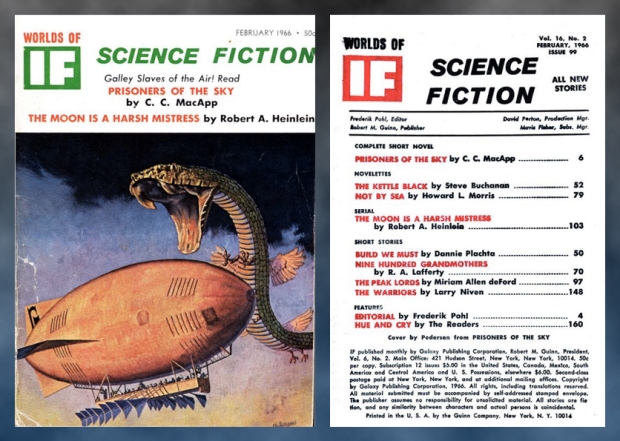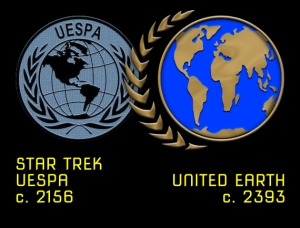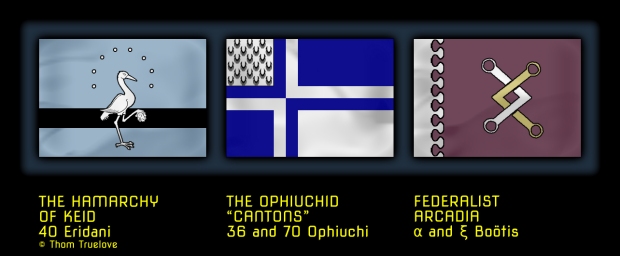In Star Trek: Communicator № 149 (April/May 2004), Jimmy Diggs¹ presented adversaries of The Next Generation as avatars of the Seven Deadly Sins. He was to have contributed a Pakled story to an anthology based on this premise and published by Gallery Books in March 2010.

Romulans were presented as Pride and the Klingons as Wrath. Not surprisingly, the Ferengi were featured in the Greed chapter. The Cardassians, who often alluded to paucity and lost glory, personified Envy. At this point, in my opinion, the analogy somewhat breaks down. Gluttony was illustrated by way of the Borg. Diggs had suggested Larry Niven’s Kzinti² for Lust but the anthology went with the Terrans of the Mirror Universe.
Last and least, the representatives of Sloth were the Pakled. I’ve felt this unnecessarily elevated a minor league “villain race”; they were featured in only one episode of TNG (“Samaritan Snare”, S02E17). It is true that background performers portrayed Pakleds in about 10% of Deep Space Nine. I still find them irritating and of inferior caliber compared with the rest. Even the Ferengi were sometimes entertaining during the DS9 series.
Presumably, the vices of these seven spacefaring species are balanced by the virtues of the United Federation of Planets.

¹ Jimmy Diggs was the writer of one episode of DS9 and six episodes of Voyager.
² The Kzinti predate the premiere of The Original Series of Star Trek by eight months, first appearing in World of IF magazine. Seven years later the two universes merged slightly in a single episode of The Animated Series (“The Slaver Weapon”, S01E14). Had Star Trek: Enterprise continued for a fifth season, executive producer Manny Coto and Jimmy Diggs planned to reintroduce Niven’s marauding space cats. The Kzinti have long been part of Star Fleet Battles, a tactical wargame, currently published by Amarillo Design Bureau. I’ve often chatted with Friend-Admiral Diggs. I know he was a player. Despite this, the aggressive feline race are not considered official “canon” in the Star Trek universe.
That said —
Last week I was musing on the Kübler-Ross model, better known as the Five Stages of Grief. Although some in the field of psychology view the construct, first proposed in On Death and Dying by Dr. Elisabeth Kübler-Ross in 1969, as scientifically flawed awareness of it is pervasive. Many do consider it a useful idea – a reminder that we should progress from our sorrows by and to our optimism and effort.
Imagine, instead of the most “celebrated” sins, that some of the alien species in the original series were archetypes of the stages.
It should surprise no one who has visited here that my favorite race in Star Trek has always been the Vulcans. Gene Roddenberry’s Writers/Directors Guide says of Spock:

“We now realize that Spock is capable of feeling emotion, but he denies this at every opportunity. On his own planet, to show emotion is considered the grossest of sins. He makes every effort to hide what he considers the ‘weakness’ of his half-human heredity.” — p. 14, Third Revision
From the start the Vulcans – or at least Spock – are explicitly the icons of Denial, the first stage of dealing with loss and grief. Some presentations of Kübler-Ross’ theory place Shock or Disbelief before Denial. In “Immunity Syndrome” (S02E19), Spock says of some other Vulcan Starfleet personnel, “Their logic would not have permitted them to believe they were being killed.”
Where the Sins construct makes Klingons Wrath, the Stages version would see them as Anger. The Orion Pirates were left out of both Diggs’ article and the anthology. Had they been included they might have been either Greed or Lust. Here they are an obvious choice for Bargaining. Both the long periods of isolationism of the Romulan Empire and their usage of cloaking devices make them reasonable candidates for Guilt/Depression.
The last stage is usually Acceptance. Hope completes some lists. The initial theatrical release of Star Trek: The Motion Picture ended with an optimistic note for the audience: “The human adventure is just beginning.”
In the final episode of TNG (“All Good Things…”, S07E25 & 26), the cosmic entity Q tells Captain Picard, “That is the exploration that awaits you. Not mapping stars and studying nebulae, but charting the unknown possibilities of existence.” This is sometimes mentioned as having initially been a statement of Leonard Nimoy’s adapted as a line of dialog by scriptwriters Ronald D. Moore and Brannon Braga.
When one considers Gene Roddenberry’s humanism and optimism it seems more than fair to presume he’d have picked humans to round out this analysis. Humans are Hope and Acceptance. At least, we may be.

✬














